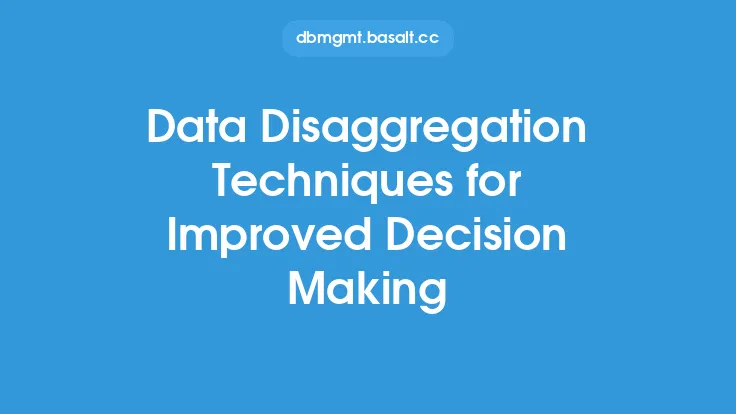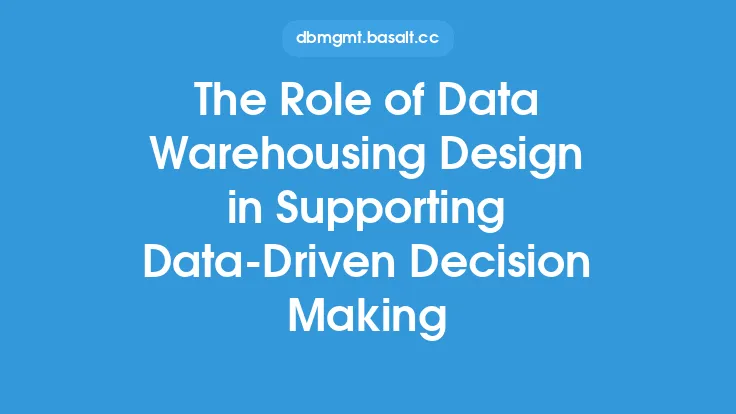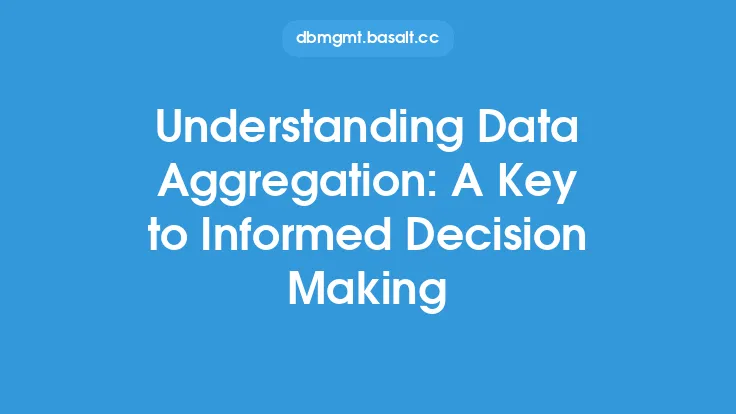Data disaggregation is a crucial process in data analysis that involves breaking down complex data into smaller, more manageable components. This process allows for a more detailed understanding of the data, enabling organizations to make informed decisions. At its core, data disaggregation is about uncovering the underlying patterns and trends within a dataset, which can be obscured when data is aggregated. By disaggregating data, organizations can gain a deeper understanding of their customers, operations, and market trends, ultimately leading to better decision-making.
Introduction to Data Disaggregation
Data disaggregation is an essential step in the data analysis process. It involves taking a large dataset and breaking it down into smaller, more granular components. This can be done using various techniques, such as categorization, filtering, and grouping. The goal of data disaggregation is to identify patterns and trends that may not be apparent when looking at the data in its aggregated form. By doing so, organizations can gain a more nuanced understanding of their data, which can inform strategic decisions and drive business outcomes.
Benefits of Data Disaggregation
The benefits of data disaggregation are numerous. For one, it allows organizations to identify areas of opportunity and improvement. By breaking down data into smaller components, organizations can pinpoint specific areas where they can optimize processes, reduce costs, and improve efficiency. Data disaggregation also enables organizations to better understand their customers. By analyzing customer data at a granular level, organizations can gain insights into customer behavior, preferences, and needs. This information can be used to develop targeted marketing campaigns, improve customer service, and create personalized experiences.
Techniques for Data Disaggregation
There are several techniques that can be used for data disaggregation. One common approach is to use categorization, where data is grouped into categories based on specific criteria. For example, customer data can be categorized by demographic, geographic, or behavioral characteristics. Another approach is to use filtering, where data is filtered based on specific conditions or criteria. For instance, sales data can be filtered by region, product, or time period. Grouping is another technique used in data disaggregation, where data is grouped into clusters based on similarities or patterns.
Tools and Technologies for Data Disaggregation
There are various tools and technologies that can be used to support data disaggregation. Spreadsheets, such as Microsoft Excel, are commonly used for data analysis and disaggregation. Statistical software, such as R or SAS, can also be used for more advanced data analysis and modeling. Data visualization tools, such as Tableau or Power BI, can be used to create interactive dashboards and reports that help to communicate insights and findings. Additionally, big data technologies, such as Hadoop or Spark, can be used to handle large datasets and perform complex data analysis.
Best Practices for Data Disaggregation
To get the most out of data disaggregation, there are several best practices that should be followed. First, it's essential to have a clear understanding of the business problem or question that is being addressed. This will help to ensure that the data disaggregation process is focused and relevant. Second, data quality is critical. Poor data quality can lead to inaccurate insights and findings, which can have serious consequences. Third, data disaggregation should be an iterative process. As new insights and findings emerge, the data disaggregation process should be refined and repeated to ensure that the most accurate and relevant information is being used to inform decision-making.
Common Challenges in Data Disaggregation
Despite the benefits of data disaggregation, there are several common challenges that organizations may face. One of the biggest challenges is data quality. Poor data quality can make it difficult to perform accurate data analysis and disaggregation. Another challenge is data complexity. Large and complex datasets can be difficult to analyze and disaggregate, requiring specialized skills and expertise. Additionally, data disaggregation can be a time-consuming and resource-intensive process, requiring significant investment in terms of time, money, and personnel.
Real-World Applications of Data Disaggregation
Data disaggregation has a wide range of real-world applications. In healthcare, data disaggregation can be used to analyze patient outcomes, identify areas of improvement, and develop targeted treatment plans. In finance, data disaggregation can be used to analyze market trends, identify areas of risk, and develop targeted investment strategies. In marketing, data disaggregation can be used to analyze customer behavior, develop targeted marketing campaigns, and create personalized experiences. In operations, data disaggregation can be used to analyze process efficiency, identify areas of improvement, and develop targeted optimization strategies.
Future of Data Disaggregation
The future of data disaggregation is exciting and rapidly evolving. Advances in big data technologies, artificial intelligence, and machine learning are enabling organizations to analyze and disaggregate large and complex datasets with greater ease and accuracy. The increasing use of cloud computing and data visualization tools is also making it easier for organizations to perform data disaggregation and communicate insights and findings to stakeholders. As data continues to play an increasingly important role in business decision-making, the importance of data disaggregation will only continue to grow.





